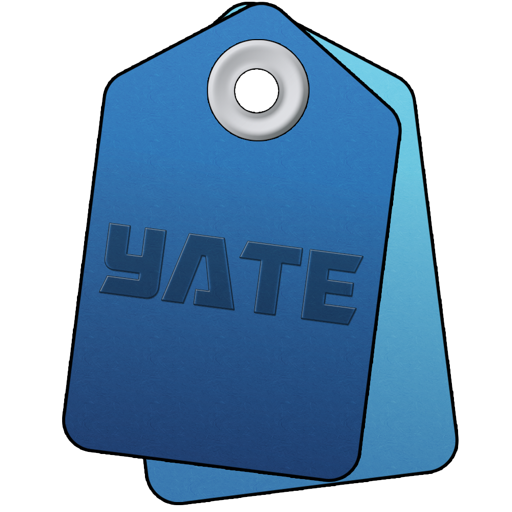

The ten edit panel preset buttons displayed above the edit panel in the main window are a simple means of changing the displayed edit panel. There are a lot of edit panels each used to display a variety of field types. These include the ten custom panels which are totally user configurable in the Custom Panel Editor.
At any given time any edit panel can be associated with one and only one edit panel preset button. The initial layout when Yate is first installed is:

Clicking on Info will display the Info edit panel; on Artwork the Artwork edit panel, etc. The lower rightmost edit panel preset is initially associated with the empty panel which ... is empty. There is no reason for this except that various edit panels have links to other panels. When a link is pressed and the associated edit panel is not mapped to a preset button, the lower rightmost preset button will be modified and activated. Typically you will map a non empty edit panel to this preset button in order to have another edit panel easily accessible.
You can rearrange panel preset buttons by dragging a button and releasing it when the hand pointer is in the new desired location.
There are two methods of changing the edit panel assigned to a particular button and accessing special functionality.
The first is by simply clicking on the preset button which represents the currently displayed edit panel. For example in the above image, The Info button is highlighted which means the Info edit panel is displayed. If you click on the Info button a menu will be displayed which displays the name of all edit panels which are not currently associated with any other preset button.
This is a quick means of selecting an edit panel which is not displayed on one of the preset buttons. When you select an item from the menu, the edit panel will be displayed and the title of the clicked preset button will be changed. There are two other types of edit panels which are not displayed in this method: Custom panels which have no defined fields are ignored. Further, edit panels which have been hidden are ignored. More on this later.
The previously selected panel on the same preset button will be displayed at the top of the list except if the empty edit panel was the previous panel.
To summarize, the single click method is a quick means of activating an edit panel that you consider important which is not currently associated with a preset button. It also can be used to go back to the previous associated edit panel.
The second method is by right clicking on a preset button. A different menu is displayed which provides configuration and access to all edit panels. The top of the menu provides the following items:
To summarize the right click method provides access to configuration and all edit panels. There is no restriction requiring you to activate (highlight) a preset button first in order to modify its association.